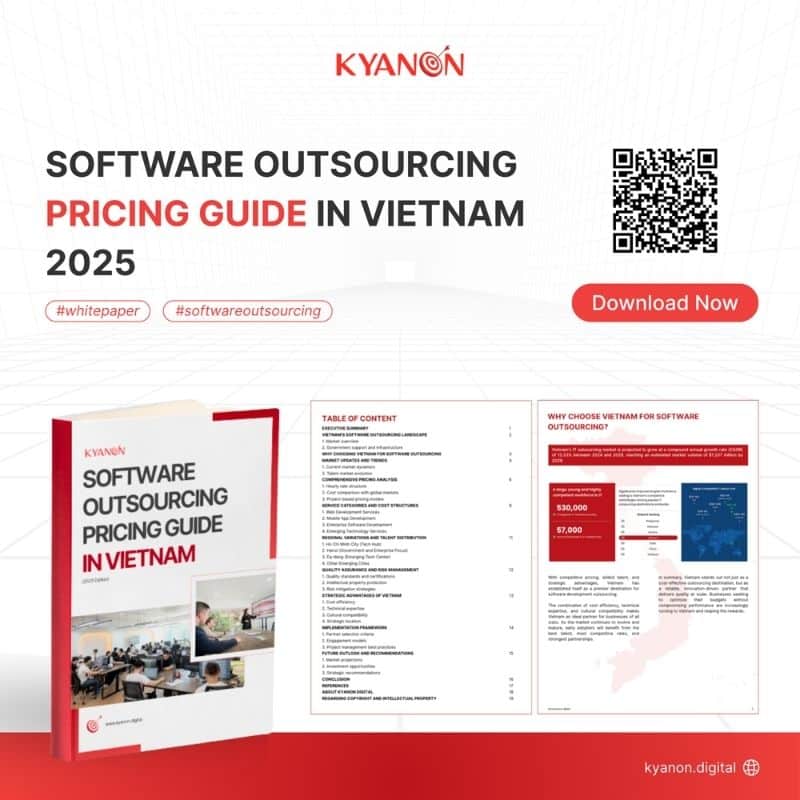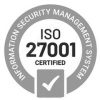1. Introduction
Today, being able to choose the right low-code development platform for your company is of the utmost importance. In an era of global digitalization, spurred on by the events of the COVID-19 pandemic, companies must embrace digital transformation if they do not want to be left behind. Low-code is most certainly not the only way for businesses to accomplish this, but it is a solution that has distinguished itself by its many advantages.
2. What is low-code development
Low-code is a form of technology that enables users to achieve the same levels of development as traditional coding methods while using significantly less code. By grouping pre-determined sets of code together and creating model templates, low-code’s building block methodology decreases the need for line by line coding and increases the speed and ease of development.
2.1 Characteristics of low-code platforms
There are many low-code platforms available, and each one caters to specific needs. They do however share some key characteristics that make them all comparable.

- Visual model: Low-code platforms all possess a visual user interface which makes it easy to comprehend for all levels of users. Developers of a varying level of experience and background can design and create with ease, which allows for greater communication between the business and developers, and clients can better understand the process, seeing their vision come to life.
- Drag-and-drop function: By using a simple drag-and drop function, low-code platforms create a straightforward and simple building environment for users. This accelerated the deployment time allowing companies the produce moẻ apps faster and keep up with changing demands.
- Multi-channel integration: Internally, your teams can work from anywhere on the globe and from any channel, so making a compatible app that doesn’t have to be re-coded is essential to sharing all key data. Externally, an omni-channel approach is a necessity, and making sure the apps you create are deployable on a variety of platforms is key for customers.
- Scalability: Having the processing power adapted to the size of your customer base is important to mirror internal enterprise growth. Low-code platforms give you managerial access to organizing all the inputs.
- Connectivity: The platform should allow you to easily access all of your data without any issues.

2.2 Advantages of low-code
These commonalities are what lead to some key advantages of low-code systems.

- Increased productivity: Thanks to the simplified programming display and design environment, low-code platforms can be used by anyone, so you save money by not needing to pay a highly skilled developer. Low-code software lowers the costs of development because fewer resources are needed than before. This allows your budget to be redistributed to your needs.
- Shorter development time: There is a shorter development time due to the simplified drag-and-drop method which means that more apps can be made faster. This allows companies to respond to changing market and customer demands as they appear.
- Business agility: Since you can keep up with the changing trends and needs of your industry, you remain more relevant. The faster turnover time also improves the quality of the final product because glitches and edits can be identified and fixed before reaching the market. Low-code also doesn’t require you to develop something entirely new when an edit or update is needed.
- Effective collaboration: Because of low-code platforms’ straightforward nature, all levels and departments within a company can understand it and this creates a far more collaborative work environment. This leads to solutions that suit the business’s real needs as they incorporate customer feedback, competitor changes and market changes in almost real time. Some low-code platforms connect all your data into one central hub that facilitates management and inter-company communication.

Low-code platforms are a simple solution for the implementation of digitization into your company. They optimize your software development processes, automating shortcuts, and opening the doors to who can be a developer. At this point, low-code platforms being something you should invest in is clear, but how do you go about finding the best platform for you?
Below we have outlined a few simple steps for you to consider when choosing the right low-code development platform for you.
Transform your ideas into reality with our services. Get started today!
Our team will contact you within 24 hours.

Why work with Kyanon Digital?
- Expertise Trusted by Fortune 500 Clients
With deep experience serving Fortune 500 companies, we deliver tailored, high-impact solutions that meet the unique demands of global enterprises. - A World-Class IT Team
Our 500+ IT experts—spanning consulting, project management, technical architecture, software engineering, QA, DevOps, and AI/ML—are committed to excellence in every project. - Quality at the Core
Certified under ISO 9001, our quality-first approach guarantees precision, reliability, and continuous improvement. - Uncompromising Security
ISO 27001-certified, we integrate robust security into every process, leveraging advanced technologies to protect your data against evolving threats.

Share your requirements with us!
3. What Can A Low-Code Platform Do
Before selecting the specific platform for you, it is important to understand what you will be using the platform for and who will be using it. This information will enable you to search for a platform that best suits your particular needs. In order to identify how you plan to use it, it is important to understand what exactly low-code technology can be used for.
3.1 Collaboration
If you plan to have both experienced software developers and citizen developers, or non-technical users that create simple automations for themselves and their departments, use the low-code platform, ensure it has separate Integrated Development Environments (or IDEs) for both. By choosing one with built-in tools to facilitate real time communication throughout the application lifecycle, it empowers your entire workforce to be co-creators. The best low-code platforms improve collaboration between developers and stakeholders allowing for feedback throughout the application lifecycle that leads to a result in line with the brand’s vision.
3.2 Automation
Automation is one of the most talked about aspects of low-code, and if you plan to use your platform to automate your processes make sure you go with one that offers a variety of automation and business process management tools. The provider must have the technology as well as the expertise to help you use the automation capabilities to achieve the best outcomes.
3.3 Data Integration
Your team is spread out in different locations and maybe even different countries, so you need a platform with the ability to integrate all of your data from all your systems and sources. No migrations or database programming necessary. Your low-code platform should give easy access to finding, understanding, governing and using the data from both internal and external sources while maintaining an uncompromised data security. Data security is often managed through security setting features that can limit access and enforcing compliance policies.
3.4 Application lifecycle support
Low-code development platforms offer support throughout an application’s lifecycle to ensure quality product delivery. This assistance can remove costs and risks by evaluating all along the development experience and catching errors as they appear. There should be an integrated set of tools and services that monitor and support your applications from ideation to deployment, and from operations to performance management.
3.5 Mobile
You should expect cross-platform functionality for both IOS and Android application models. The deployed applications on mobile have no need for separate development, maintenance or upgrades. Assuring consistency across channels and between the offline and online experiences, ensures a frictionless customer experience across various digital touchpoints.
3.6 Cloud
Low-code platforms can enable you to develop cloud-native applications that ship faster to the end user, are scalable, can handle large volumes of traffic and can be deployed whenever and wherever it makes the most sense for you. Deployment can be on public, private or hybrid clouds which simplifies your operations.
3.7 Cybersecurity
Since low-code platforms are made to be accessible to a wider range of users than traditional coding options, there is an added level of potential security concerns with the additional users. Low-code platforms come with integrated security features that are applicable to both the platform and the apps developed using it. Some platforms give you centralized control over accessibility to the data and automation. With the proper governance and guard rails, low-code can be more secure than traditional app development.
3.8 Discovery
One of the biggest differentiators between low-code platforms are by their means to effectively discover where automation will have the greatest impact in your company. Identifying, defining and documenting the processes that will gain the most value from automation can be done with a process mining tool and through the use of digital twin technology. It creates a visual representation of the issues you may face at any point throughout the application lifecycle. Built-in process mining enables you to have the insight that allows you to take the most beneficial actions and optimizes your processes.
4. Where to look for different platforms
Now that you understand not only what low-code technology is, the advantages it can bring to your business and, most importantly, what a low-code platform can be expected to do, you can begin the search for the ideal platform for you. Hopefully by now you have taken the time to pinpoint some of the specifics of what you want from your platform and what company needs it will fulfill.
There are many available platforms to choose from, but we will be looking at the top 3 low-code platform ‘Leaders’ according to the 2021 Gartner Magic Quadrant. If you are interested in a more comprehensive list of options, check out our blog on the topic. Gartner ranks the different platform providers strengths and weaknesses and sorts them into the 4 categories of: leaders, challengers, niche players, and visionaries. Leaders are those identified with a high ability to execute and a high completeness of vision. The 3 leaders we will talk about are: Mendix, Microsoft and OutSystems.
4.1 Mendix

Mendix is a cloud-based app development platform owned by Siemens. It is an autonomous company but uses the Siemens global footprint for its distribution and range. The prime features of Mendix are: visual development, multi-channel apps, proactive and context-aware apps management, development and operations (DevOps), multi-cloud deployment, security, open and extensible integrations, AI assisted development and more. It is a multi experience development platform (MXDP) that focuses on assisting designers and developers in creating a wide range of apps. It utilizes IoT and digital twin technology. It has a monthly subscription.
4.2 Microsoft

Microsoft PowerApps has the typical low-code development platform features of a drag and drop interface and customizable templates for any device. Its main features are: data management, workflow automation, application lifecycle management, productivity tracking, collaboration and more. It enables multiple data sources and generates custom reports. It is secure and has a centralized repository. It integrates with several third-party platforms (like OneDrive and Outlook) and works on a monthly subscription fee.
For a more in depth analysis between Mendix and Microsoft, check out the comparison between Mendix and Microsoft on this blog.
4.3 OutSystems

OutSystems distinguishes itself from other low-code platforms with its offline support and access to native device capabilities. It allows for graphic integration on the work surface and allows developers to write custom code in many languages. It is an MXDP that combines low-code development with powerful mobile features which enables the development of online, mobile, progressive web and wearable apps. It concentrates on the construction of reusable components including UI, headless, business logic, processes, integrations, and edge deployments. It has application portfolios that interface easily with current systems and allows you to manage the whole app lifecycle with ease.
For a more in depth analysis between Mendix and OutSystems, check out the comparison between Mendix and OutSystems from this blog.
5. Conclusion
At Kyanon Digital, we hope you found this blog instructional and informative about how you should go about choosing the right low-code development platform for your company. Low-code development platforms seem to be the direction the future is headed, so it is crucial to choose one that fulfills your business’s needs and wants for a digital transformation to be a success. There are many options available, each with their own attributes.
If you have any questions about how to make a choice, don’t hesitate to reach out to us.
Get the Vietnam Software Outsourcing Pricing Guide 2025
Your shortcut to Vietnam’s outsourcing costs and key market insights.

Why work with Kyanon Digital?
- Expertise Trusted by Fortune 500 Clients
With deep experience serving Fortune 500 companies, we deliver tailored, high-impact solutions that meet the unique demands of global enterprises. - A World-Class IT Team
Our 500+ IT experts—spanning consulting, project management, technical architecture, software engineering, QA, DevOps, and AI/ML—are committed to excellence in every project. - Quality at the Core
Certified under ISO 9001, our quality-first approach guarantees precision, reliability, and continuous improvement. - Uncompromising Security
ISO 27001-certified, we integrate robust security into every process, leveraging advanced technologies to protect your data against evolving threats.


















